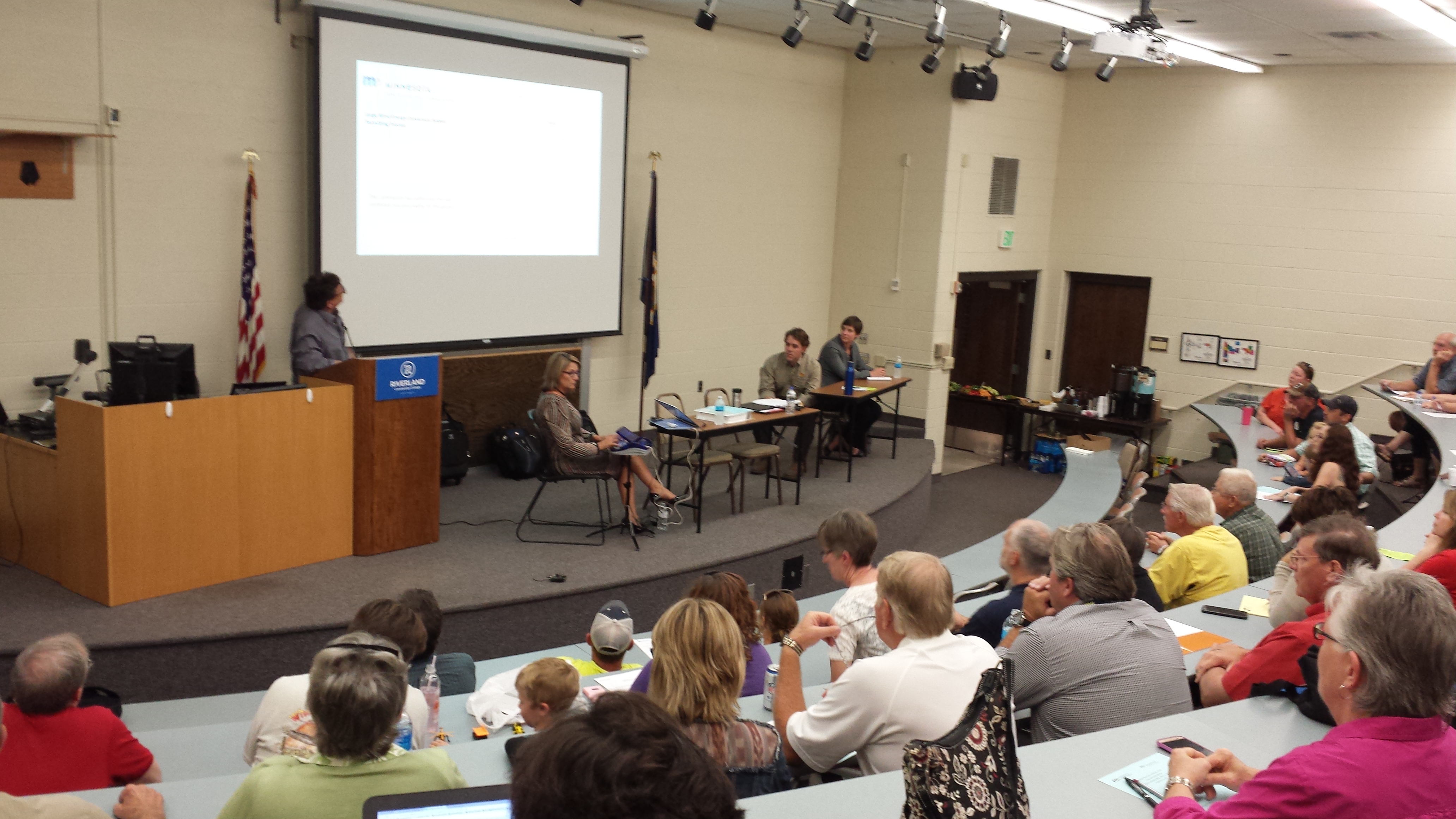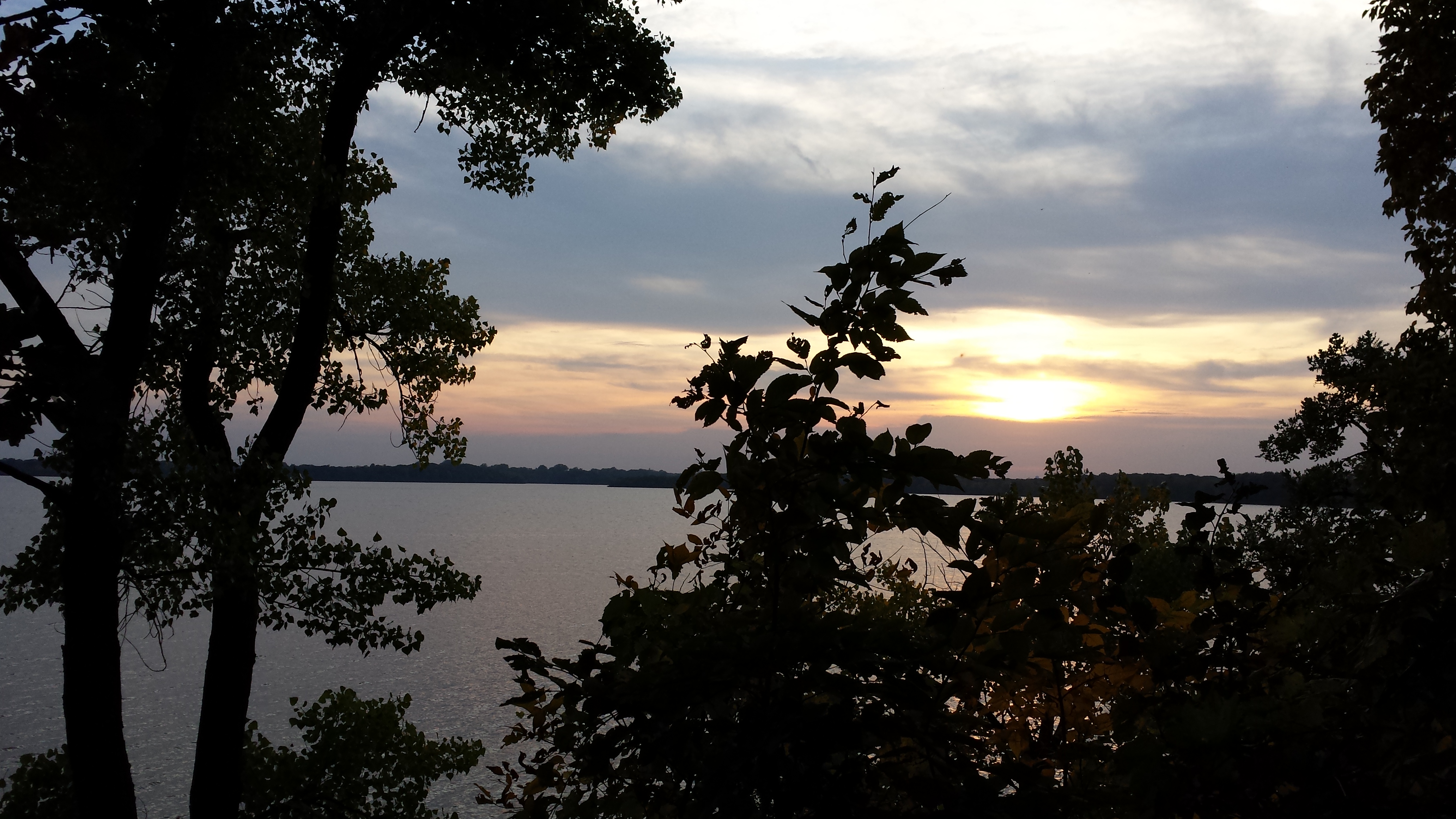Great turnout and input in Albert Lea last night
September 21st, 2017

Albert Lea, MN — Last night was the Dept. of Commerce information meeting where Commerce collected comments concerning (love alliteration, eh?) the Draft Site Permit it’s putting together for the Freeborn Wind Project.
For the Public Utilities Commission docket on this project, go HERE and then search for docket 17-410.
Before heading over to the meeting, I filed this Motion for Certification and Petition for Task Force and Scientific Advisory Task Force. Because this is the first contested case for a wind project siting docket in Minnesota, and because we’re operating under Minn. R. ch. 1405 Power Plant Siting Act for procedure, and because the wind siting chapter, Minn. Stat. 216F, specifically exempts wind from MOST of the Power Plant Siting Act, but specifically not 216E.08 which authorizes Task Forces, and most importantly, because there are material issues of fact about which Task Forces could help build the record, this is oh-so-important. Let’s get going on it!
The place was packed, and many more came in after I took this photo, it was standing room only.

And folks didn’t come only for the treats (great treats by the way, especially for this camper working in an office in the woods!). One man was very upset early on, jumping in during Rich Davis’ presentation, riled because he did not get notice about this project until it had already been applied for. This is a legitimate issue, and because there was no Certificate of Need, there was no legal requirement that notice be provided until after the application had been accepted as complete. He stormed out, not wanting to sit through all the “blah-blah” at the front end of this meeting (it did go on and on and on).
Rich Davis’ presentation did include some process explanation that was more specific about what comprises a contested case than that provided by PUC’s Mike Kaluzniak (the latest “Public Advisor” quit, and they’re looking for someone again). They never want to talk about “Intervention” and explain how people can become parties and when the deadline is to decide and file. They didn’t talk about the public comment period after the public hearing or include that in the powerpoint. They didn’t talk about the opportunity to file exceptions to the report of the Administrative Law Judge. etc… GRRRRRRR. And because this case is an odd one, the first contested case for wind, we’re in need of procedural guidance, what there is, and there is much that is known and which needs to be disclosed.
The Association of Freeborn County Landowners was there, filled the room, and did a tremendous job. Very specific comments, most with documents supporting their comments. Like wow, for the first time out the gate, very impressive. Keep up the good work!
Here’s the handout I’d passed around:
How 2 Comment on the Freeborn Wind Project
COMMENTS ARE DUE OCTOBER 9, 2017
Comments by mail or email – again, due by 4:30 October 9, 2017:
Richard Davis richard.davis@state.mn.us
MN Dept of Commerce
85 7th Place East, Suite 500
St. Paul, MN 55101-2198
Or better yet, eFile in PUC’s eDockets system so everyone can see and consider your comment (otherwise they end up in a big long bundle of a pdf with everyone else’s comments), again, due 4:30 October 9, 2017:
Register: https://www.edockets.state.mn.us/EFiling/ Registration is easy and fast. Then follow prompts to eFile!
What was best about last night’s meeting is that the comments were specific and on point. I have 17 pages of notes, single spaced, and close to carpal tunnel from writing it all. Way to go, folks!! Meeting minutes will be posted on the Commerce site sometime soon, and I’ll post.
Also, soon the ALJ’s Scheduling Order/First Prehearing Order will be issued, and I’ll also post the official schedule here.
++++++++++++++++++++++++++++++++++
Also, although in 1995 the legislature specifically exempted wind siting from the Power Plant Siting Act, some sections DO apply, including the criteria for siting, now Minn. Stat. 216E.03, Subd. 7:
Subd. 7.Considerations in designating sites and routes.
(a) The commission’s site and route permit determinations must be guided by the state’s goals to conserve resources, minimize environmental impacts, minimize human settlement and other land use conflicts, and ensure the state’s electric energy security through efficient, cost-effective power supply and electric transmission infrastructure.
(b) To facilitate the study, research, evaluation, and designation of sites and routes, the commission shall be guided by, but not limited to, the following considerations:
(1) evaluation of research and investigations relating to the effects on land, water and air resources of large electric power generating plants and high-voltage transmission lines and the effects of water and air discharges and electric and magnetic fields resulting from such facilities on public health and welfare, vegetation, animals, materials and aesthetic values, including baseline studies, predictive modeling, and evaluation of new or improved methods for minimizing adverse impacts of water and air discharges and other matters pertaining to the effects of power plants on the water and air environment;
(2) environmental evaluation of sites and routes proposed for future development and expansion and their relationship to the land, water, air and human resources of the state;
(3) evaluation of the effects of new electric power generation and transmission technologies and systems related to power plants designed to minimize adverse environmental effects;
(4) evaluation of the potential for beneficial uses of waste energy from proposed large electric power generating plants;
(5) analysis of the direct and indirect economic impact of proposed sites and routes including, but not limited to, productive agricultural land lost or impaired;
(6) evaluation of adverse direct and indirect environmental effects that cannot be avoided should the proposed site and route be accepted;
(7) evaluation of alternatives to the applicant’s proposed site or route proposed pursuant to subdivisions 1 and 2;
(8) evaluation of potential routes that would use or parallel existing railroad and highway rights-of-way;
(9) evaluation of governmental survey lines and other natural division lines of agricultural land so as to minimize interference with agricultural operations;
(10) evaluation of the future needs for additional high-voltage transmission lines in the same general area as any proposed route, and the advisability of ordering the construction of structures capable of expansion in transmission capacity through multiple circuiting or design modifications;
(11) evaluation of irreversible and irretrievable commitments of resources should the proposed site or route be approved; and
(12) when appropriate, consideration of problems raised by other state and federal agencies and local entities.
(c) If the commission’s rules are substantially similar to existing regulations of a federal agency to which the utility in the state is subject, the federal regulations must be applied by the commission.
(d) No site or route shall be designated which violates state agency rules.
(e) The commission must make specific findings that it has considered locating a route for a high-voltage transmission line on an existing high-voltage transmission route and the use of parallel existing highway right-of-way and, to the extent those are not used for the route, the commission must state the reasons.
This is the criteria that we need to focus on when presenting issues, testimony, comments, briefs and exceptions to the ALJ’s report.
More coming soon! In the meantime, it’s time to break camp and head out! Myre-Big Island is a great park. Though the bathroom/showers at the Big Island campground suck, they’re superb at the other campground in the park (White Fox). Yes, posted a campground review, inquiring minds need to know where the good state park bathrooms are!

Here’s the view right across the road night before last, the site is fronting the lake:

Leave a Reply